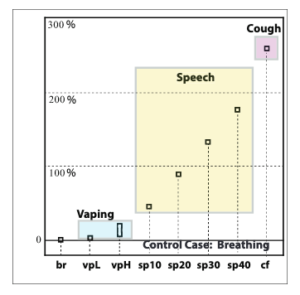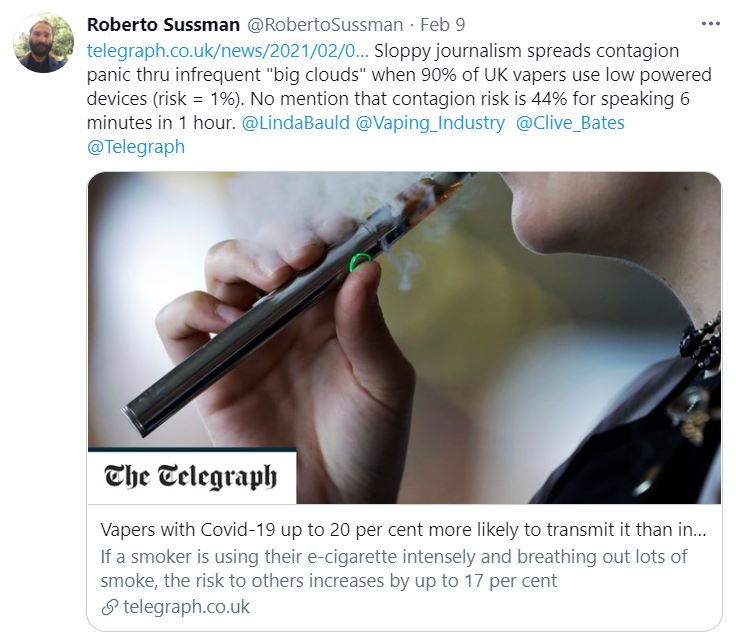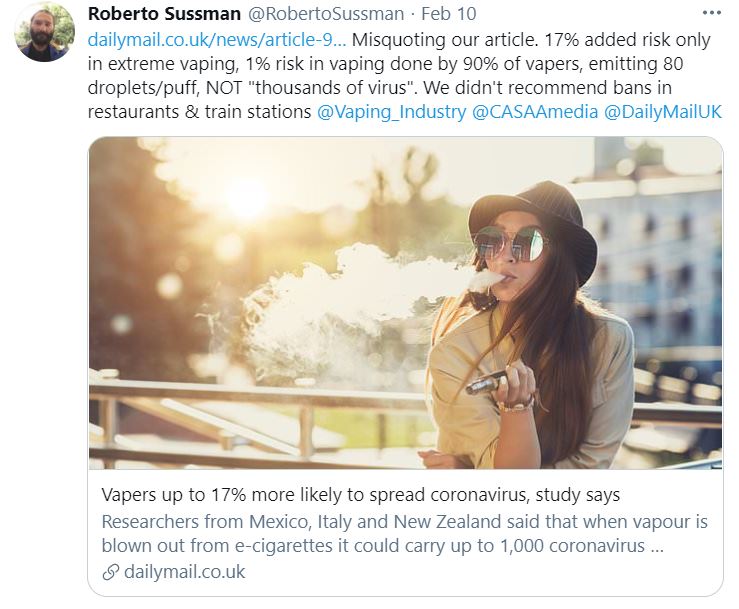“Sloppy journalism spreads contagion panic”
The lead author of a study on vaping and Covid-19, Dr Roberto Sussman, Associate Professor at the University of Mexico City, has called one article in a British newspaper about the study ‘sloppy journalism’, and claims another misquoted the study and falsely attributed quotes to him.
The paper looked at the plausibility, scope and risks of aerial transmission of pathogens (including the SARS-CoV-2 virus) through respiratory droplets carried by exhaled e–cigarette aerosol, and found that, “low intensity vaping only produces a minuscule (∼1 %) extra contagion risk with respect to the control case scenario of continuous breathing.”
‘Low intensity vaping’ utilises low powered devices which are the most representative in the largest and most established markets, the UK and USA. Both market surveillance consumer surveys and the experience of IBVTA members show that the overwhelming majority of vapers (around 90% in the UK) utilise low powered devices.
The study also compared this control case scenario of continuous breathing to speaking and coughing. Even the more eagle eyed reader would be able to identify that the results of this comparison were that vaping presented a lower risk than speaking.

Instead of presenting the conclusions of the study, The Telegraph chose to publish the headline, “Vapers with Covid-19 up to 20 per cent more likely to transmit it than infected non-smoker, study finds”.
The Daily Mail chose the headline, “Vapers up to 17% more likely to spread coronavirus because it gets blown around when they breathe out, study says”.
There are still between 6 and 7 million smokers in the UK and smoking results in around 73,000 deaths and 480,000 hospital admissions every year. Those smokers deserve the opportunity to move to products that are as safe and effective as possible in replacing combustible tobacco. Both smokers and current vapers also deserve accurate information about vaping products and their associated risks, and especially at a time when more us think about our health in the context of the Coronavirus epidemic.
What was presented in both The Telegraph and Daily Mail articles once more demonstrates deeply insidious flaws in media coverage about vaping. It shows a lack of professionalism by misleading when the science is very clear, which seems to be underpinned journalistic prejudice against vaping, creating a “bad news” story where there is none.

